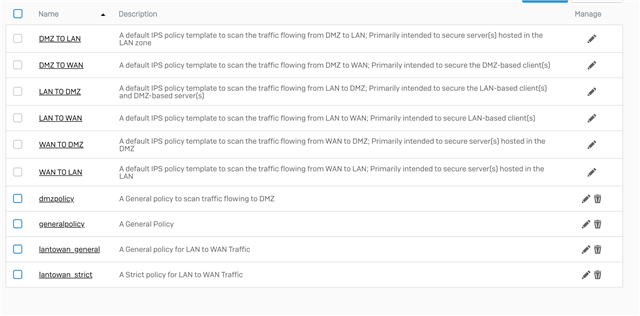Hi guys,
I just set up my first XG using the setup wizard. After my first login, this is what I found in the default IPS policy list:
It looks to me as if the wizard added some additional policies, that - judging by the names - are similar to the built in default policies. Why were these added and what's their purpose (given that the built in policies are very similar)?
Thanks
This thread was automatically locked due to age.



